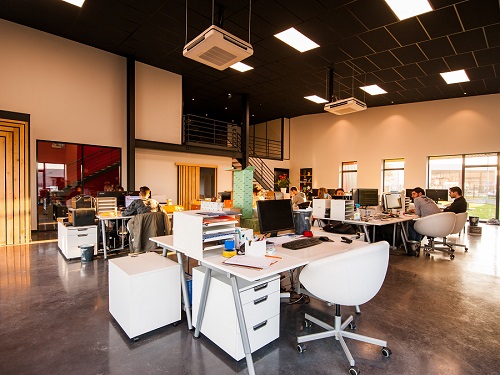Tech Insight : Open Plan Offices Create Stress From Noise

Recent research by TheNextWeb.com has confirmed long suspected views that open-plan office designs can reduce psychological well-being, affect moods, and create stress.
This Study
The most recent study, published online by Cambridge University Press, is based on an experiment which compared the difference between the effects of office noise on those in a larger open-plan office (an OPO auditory environment), and a quieter private office (an office auditory environment). A range of objective and subjective measures of well-being and performance were compared between subjects in simulated versions of an open-plan, and a private office setting. The researchers looked at both objective and subjective measures of well-being and performance.
The Results
The results showed that although noise didn’t have a negative effect on the cognitive task performance of those working in an open-plan office (compared to the quieter environment), the noise of the open-plan space did reduce psychological well-being.
How Did They Know?
The researchers came to their conclusions by studying self-reports of the mood of the research subjects, their facial expressions of emotion, and the physiological indicators of stress of the subjects such, such as heart-rate and skin conductivity.
Arguments For Open-Plan
Although there now appears to be a growing body of research to suggest that open-plan offices may not have lived-up to their promise of easier communication and collaboration, there are what appear to be some sound, practical reasons for having an open-plan offices in the first place. These include the desire to make teams feel closer and to encourage interaction (even though this may only happen with those in close proximity), making office culture and informal communication more transparent, making the office space more flexible, and saving costs.
Previous Research
Previous research about the effects of open-plan office design on workers, has, however, reached many more negative conclusions, including:
– Distraction can be a problem in open-plan workplaces.
– Lack of privacy affects engagement in tasks. Also, a Steelcase study (2014), showed that a lack of employee privacy in the workplace can negatively affect an employee’s overall ability to become deeply engaged in the work they are doing.
– Open plan doesn’t necessarily improve interaction or collaboration. A study by Bernstein and Turban, funded by Harvard Business School (2018) found that, contrary to popular belief, open office architectures significantly decrease the volume of face-to-face interaction (by approx. 70 percent).
– Employees in open-plan offices may be less likely to speak up or voice their concerns when they disagree with others. For example, the ‘Room – 2018 Office Woes Report’ highlighted how 31 percent of employees in open-plan offices say they hold back their true thoughts and opinions for fear of being heard and judged by co-workers. Similarly, being constantly observable in an office can dampen interactions that could help collaboration.
– Privacy and concentration are sacrificed in an open-plan setting in favour of the need for collaboration and interaction, but this trade-off has negative outcomes for productivity and work relationships.
Noise At Work Affecting Stress Levels
Just as indicated in the recent TheNextWeb.com study, noise (background noise and noise at work) has long been known to be a stress-inducing factor. For example, The Remark Group study (2019) showed that 65 percent of subjects said that that noise in the workplace impacted on their ability to complete work in an accurate and timely manner, almost half (44 percent) reported that noise had a negative impact on their overall wellbeing, and 40 percent reported that noise at work caused them to feel stressed.
Too Many People in (Open Plan) Office No Better
Other research has shown that putting large numbers of employees in an enclosed space can also cause stress and can make it much easier to spread viruses and infections. For example, studies have shown that employees in open offices take over 60 percent more sick days (average) than employees in more traditional style workplaces.
The Pandemic Factor
The COVID-19 pandemic has meant that office noise and distraction in open-plan offices have gone further down the list of concerns (below safety) from infection as many employees are making the return to offices.
What Does This Mean For Your Business?
Open-plan working appears to make workers feel less in control of their environment, more conscious of what they’re saying (often to the detriment of the company) and exposes them to other stress-inducing stimuli (noise and other distractions) that can also have a negative effect on productivity. Businesses need to focus attention on how they can build a close, productive team of people with complementary skills and attributes. As far as office layout goes, assessing the impact of things like noise (and other distractions) could enable data data-driven recommendations about the design and modification of workspaces, and businesses need to create balanced office layouts that enable employees to feel as though they have enough boundaries to make sense of their environment and feel comfortable, minimise noise and distractions, benefit collaboration, and contribute to workflow. The pandemic, however, has made office environments less attractive altogether for workers, and the challenge of designing post-pandemic office spaces that minimise yet another source of stress (fear of infection at work) has become a new challenge for many businesses, open plan or not.
Sponsored
Ready to find out more?
Drop us a line today for a free quote!
